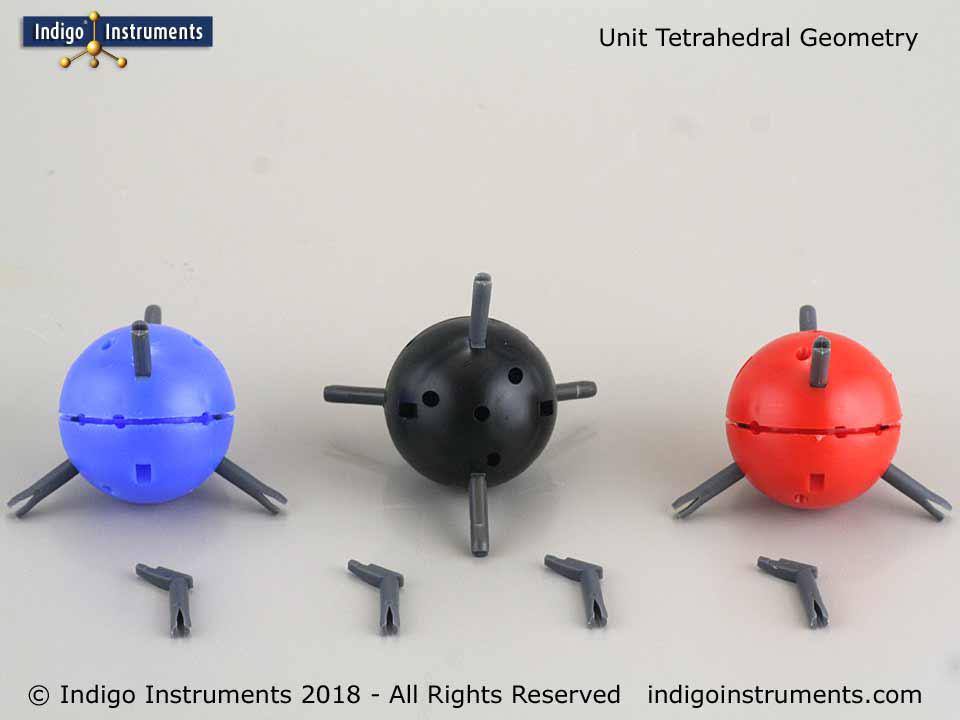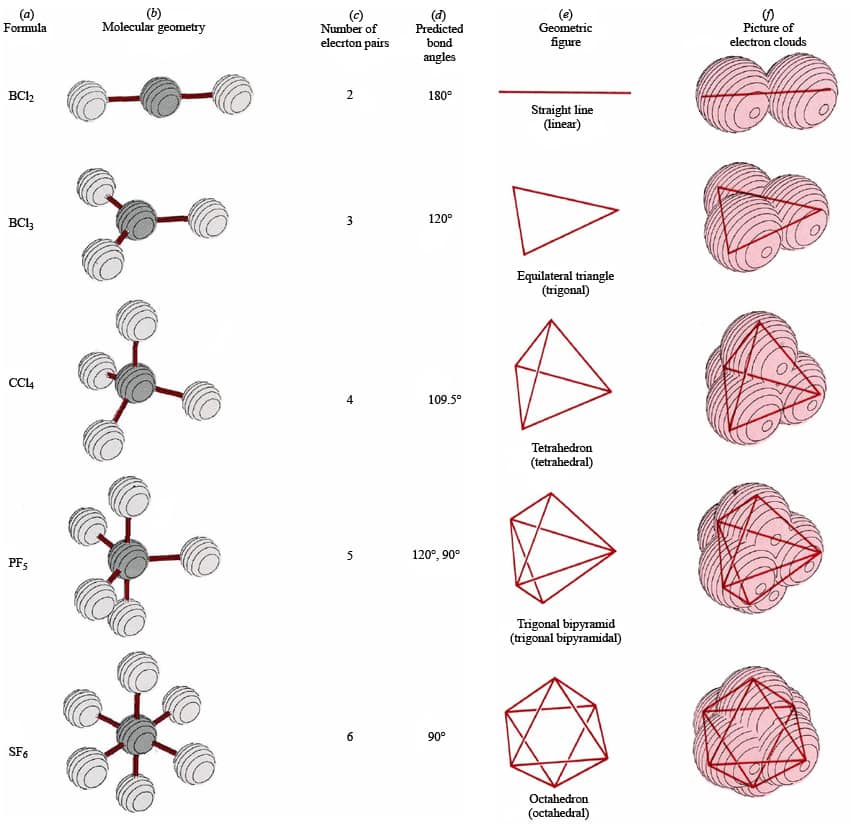
Based on the chart, the molecular geometry for BF 3 would be trigonal planar, with an angle of 120 degrees between the bonds.\): Water molecule. If we drew the electron dot structure for BF 3, boron trifluoride, we will notice that there are three attachment point, and 3 bonds, to the central atom, boron. What is the molecular geometry of BF 3, boron trifluoride? of electrons around the central carbon atom the electron-pair geometry is tetrahedral, as is the molecular structure. Now that we know the molecular geometry, we can determine the bond angle to be about 105 degrees from our chart. Therefore, the resulting molecular geometry is a a bent geometry. Two of these attachments are bonds and the other two are lone pairs. However, this is not the molecular geometry.

This would make the electron geometry tetrahedral. Notice there are 4 attachments, or, electron groups surrounding oxygen. The answer is the molecular geometry of water would be bent.

Practice Example: What is the molecular geometry and bond angle of water (H 2O)? The second figure serves as a visual aid for the table.

The table of molecular geometries can be found in the first figure. A table of geometries using the VSEPR theory can facilitate drawing and understanding molecules. For the most part, this information will have to be memorized. Molecular geometries (linear, trigonal, tetrahedral, trigonal bipyramidal, and octahedral) are determined by the VSEPR theory. In the table below, you will see the coordination between the number and type of attachments in relation to the bond angles. Notice in the table below how if there are no lone pairs, the molecular geometry and electron geometry will be the same. additionally, we need to know how many of these attachments are bonds and lone pairs. The configuration of the bound atoms determines the. Firstly, we must know how many total attachments there are. Due to P having four valence electron pairs, the geometry of the electron pair around P is tetrahedral. To determine the molecular geometry of a structure we need to know two things. Configurationĭetermining molecular geometry and bond angles Below is a table demonstrating the relationship between the number of bonding partners and these configurations. There are three main types of configurations: linear, trigonal, and tetrahedral. This theory revolves around the idea that electrons repel each other and therefore will bond accordingly. Molecular geometry is usually studied using the VSEPR (valence shell electron pair repulsion) model, which predicts the shape of a molecule based on the repulsion between the electrons in the outermost shell of the atoms.Ĭhemists are able to predict the arrangement of atoms and chemical bonds using the valence-shell electron-pair repulsion theory or VSEPR. The geometry of a molecule can have a big impact on its chemical and physical properties, such as its reactivity and solubility.įor example, the shape of a water molecule (H2O) is bent, which gives it a high surface tension and allows it to dissolve many other substances. It is determined by the bonds between the atoms and any lone pairs of electrons that are present in the molecule. Molecular geometry refers to the three-dimensional structure, or arrangement, of the atoms that make up a molecule.

Tetrahedral molecular geometry free#
If you enjoy this tutorial, feel free to check out our other tutorials on bonding listed below. You will learn about the more common molecular geometries: tetrahedral, linear, bent, trigonal pyramidal, and trigonal planar – along with their bond angles.
Tetrahedral molecular geometry how to#
In this tutorial, you will learn how to identify the molecular geometry and bond angles of a molecule.


 0 kommentar(er)
0 kommentar(er)
